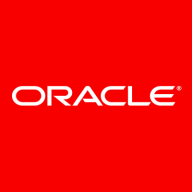

Nintex Process Platform and Oracle BPM Suite both compete in the business process management category. While Nintex excels in ease of use and specific integrations, Oracle BPM offers comprehensive industry-standard process modeling and integration capabilities, often making it the favored choice for complex enterprise environments.
Features: Nintex provides scalability and high performance, with SmartForms enabling quick web form development and seamless mobile integration. It leverages its SmartObject technology for robust data management and effortless workflow creation, particularly within SharePoint. Oracle BPM focuses on process modeling using BPMN 2.0 and Java EE Connector Architecture. It excels in integration with third-party systems and comprehensive metrics reporting, supporting both industry standards and business rules that enhance workflow management.
Room for Improvement: Nintex could advance its management console and error reporting; users find managing workflows challenging due to inadequate troubleshooting information. Additionally, performance can suffer under heavy server load. Oracle BPM users find it costly and complex, particularly with integration lacking in modern API standards and AI technology. On-premise solutions have a steep learning curve and are often labeled cumbersome.
Ease of Deployment and Customer Service: Nintex allows flexible deployment both on-premises and in the cloud, backed by 24/7 global support. However, its response times can sometimes be slow. Oracle BPM mainly supports on-premises deployment with limited hybrid cloud solutions, and its technical support is often criticized for inefficiency in problem resolution.
Pricing and ROI: Nintex is considered expensive, especially compared to Microsoft's native functions. Its shift from a perpetual to consumption-based pricing model aids scalability but can quickly increase costs. Despite the expense, ROI is positive due to workflow efficiencies. Oracle BPM's pricing is high, with comprehensive licensing and additional support charges, though it offers significant ROI through advanced process automation and integration efficiencies.
I found the support to be excellent with immediate responses whenever I open a ticket.
Performance issues arise if we have multiple joins within the actions, which definitely reduces the performance.
Performance issues arise if we have multiple joins within the actions, which definitely reduces the performance.
If we receive data in JSON, there is no action available in Nintex Process Platform to parse the data and extract data from that JSON string.
Additionally, the deployment process should be easier.
Nintex Process Platform is expensive.
The licensing of Oracle BPM will cost around $50,000 plus.
We use Nintex Process Platform for process automation.
My team and I created a demo using Nintex, focusing on getting emails, reading, writing, and managing attachments.
The most valuable features I find in Oracle BPM include a unified process management platform, human workflow management, and process simulation and optimization.
| Product | Market Share (%) |
|---|---|
| Nintex Process Platform | 1.7% |
| Oracle BPM | 1.7% |
| Other | 96.6% |

| Company Size | Count |
|---|---|
| Small Business | 17 |
| Midsize Enterprise | 6 |
| Large Enterprise | 25 |
| Company Size | Count |
|---|---|
| Small Business | 9 |
| Midsize Enterprise | 8 |
| Large Enterprise | 10 |
Nintex Process Platform offers no/low-code development with system integrations and efficient workflow management, ideal for complex business processes. It's known for its scalable workflows, data management through SmartObjects, and a user-friendly visual designer.
Nintex Process Platform enables organizations to automate processes with ease, supporting electronic forms, digital transformation, and seamless department collaboration. Users on SharePoint and other integrated systems leverage its extensive workflow capabilities for approvals, onboarding, and information capture. While its current framework might benefit from performance enhancements and improved management console usability, it remains a strong choice for providing scalable solutions across industries.
What are the key features of Nintex Process Platform?Companies in sectors like government, HR, and financial services implement Nintex Process Platform for its ability to streamline and connect internal processes. It supports approval workflows, notifications, and data capturing, proving its versatility for diverse business needs. However, challenges with document conversion, performance, and cloud feature parity suggest room for enhancements, particularly in industries handling complex workflows.
We monitor all Business Process Management (BPM) reviews to prevent fraudulent reviews and keep review quality high. We do not post reviews by company employees or direct competitors. We validate each review for authenticity via cross-reference with LinkedIn, and personal follow-up with the reviewer when necessary.